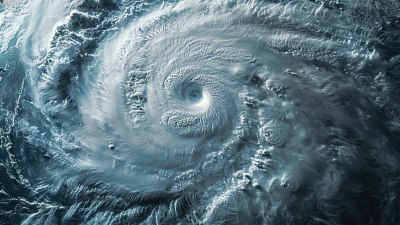The Science of Urban Heat Islands
Explore the causes, effects, and solutions to urban heat islands in this comprehensive guide.

Urban Heat Islands (UHIs) represent a fascinating phenomenon where urban areas exhibit significantly higher temperatures than their rural surroundings. This effect, primarily driven by human activities, is a critical factor influencing climate patterns, energy consumption, and public health in metropolitan regions. Understanding the science behind UHIs is essential for urban planning, environmental sustainability, and improving the quality of life in cities.
What are Urban Heat Islands?
Urban Heat Islands occur when urban landscapes absorb and retain heat from the sun more effectively than natural landscapes. Buildings, roads, and other infrastructure materials such as asphalt and concrete have a high heat capacity, storing heat during the day and gradually releasing it at night. This leads to a distinctive temperature difference between urban areas and their rural counterparts, sometimes exceeding 5 degrees Fahrenheit. Factors contributing to UHI formation include the density of buildings, lack of vegetation, and anthropogenic heat released from vehicles, industrial processes, and energy use.
How Urban Heat Islands Form
The mechanisms behind UHI formation are multifaceted. The primary contributors include:
- Surface Materials: Urban areas typically consist of materials like asphalt and concrete that absorb more heat compared to natural areas dominated by grass, trees, and water bodies.
- Vegetation Removal: The removal of trees and green spaces for construction reduces the natural cooling effect provided by vegetation, which is capable of lowering temperatures through processes such as transpiration.
- Building Density: High-density urban areas tend to trap heat. Tall buildings can create canyons that block wind and reduce air circulation, exacerbating the heat retention.
- Heat Generation: Human activities such as transportation, industrial operations, and heating and cooling systems contribute additional heat to urban environments.
Impacts of Urban Heat Islands
The emergence of Urban Heat Islands has profound implications for various aspects of urban life:
- Public Health: Increased temperatures can lead to heat-related illnesses and exacerbate respiratory problems. Vulnerable populations, such as the elderly and those with pre-existing health conditions, are particularly at risk.
- Energy Consumption: Higher temperatures result in increased use of air conditioning systems, leading to greater energy consumption and a burden on power grids, especially during peak load periods.
- Water Quality: Elevated temperatures can affect water bodies, leading to algal blooms and reduced oxygen levels, threatening aquatic life and drinking water quality.
- Air Quality: Heat can increase the concentration of air pollutants and ground-level ozone, contributing to smog and related health issues.
Mitigating Urban Heat Islands
Tackling the challenges posed by Urban Heat Islands requires a multi-faceted approach. Strategies for mitigation include:
- Increasing Vegetation: Expanding green spaces, planting trees, and creating urban gardens can significantly cool neighborhoods through shading and evapotranspiration.
- Cool Roofs: Implementing reflective roofing materials that absorb less heat can reduce roof surface temperatures and building energy needs.
- Green Infrastructure: Utilizing permeable materials for pavements and roadways allows water infiltration, reducing heat retention and improving stormwater management.
- Urban Planning: Encouraging smart growth and urban designs that maximize natural ventilation and minimize heat absorption can substantially counteract UHI effects.
Case Studies and Success Stories
Several cities have initiated successful programs to mitigate Urban Heat Islands:
- Los Angeles: The city has implemented a comprehensive Urban Forest Program, aiming to double the tree canopy cover by 2028. This initiative significantly increases shade and improves air quality.
- New York City: The NYC CoolRoofs initiative revitalizes rooftops with reflective coatings, helping reduce energy costs and heat retention.
- Chicago: The city has adopted a combination of cool roofs and increased vegetation in public spaces, resulting in measurable temperature reductions across the urban landscape.
The Role of Policy and Community Engagement
Mitigating Urban Heat Islands requires not just technological advancements but also supportive policies and community engagement. Governments can play a pivotal role by setting regulations that encourage green building standards, promoting urban forests, and investing in public awareness campaigns. Community involvement is essential to ensure that local populations understand and support urban greening initiatives, empowering them to take action in their neighborhoods.
Future Directions and Research
As climate change continues to alter weather patterns and increase global temperatures, further research into Urban Heat Islands will be crucial. Urban planners and researchers are increasingly leveraging technology, including satellite imagery and advanced modeling techniques, to study UHI phenomena. This research can inform policies and decision-making, ensuring that urban areas are resilient to climate fluctuations while improving living conditions.
The Science of Urban Heat Islands is vital for understanding the complex interactions between urban environments and climate. By acknowledging and addressing the causes, impacts, and potential remedies for UHIs, cities can pave the way for a sustainable urban future. Through increased vegetation, innovative infrastructure solutions, policy support, and community engagement, urban heat impacts can be mitigated, leading to healthier, safer, and more resilient cities.











